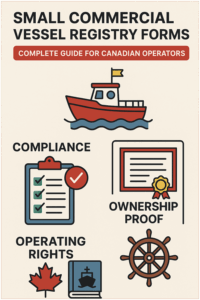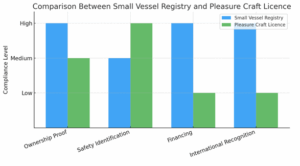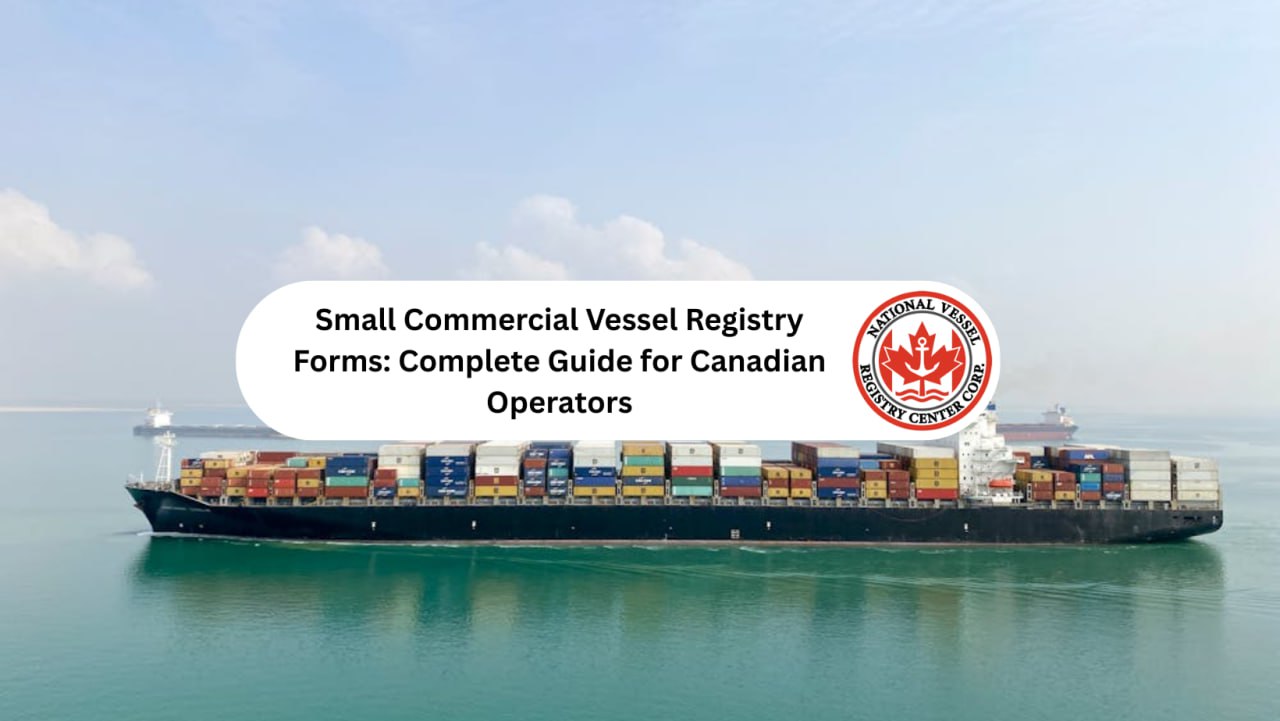For commercial operators, it is not just red tape but part of a legal obligation. Small commercial vessel registry forms act as a critical resource for proving compliance, ownership, and the right to operate. These forms form the basis of the Canadian small commercial vessel registration system while also indicating that each operator must comply with the Canada Shipping Act, 2001.
Beyond mere compliance with the law, registration is helpful for small commercial vessels in getting financing, obtaining insurance, and in obtaining international recognition of the vessel’s identity. Failure to register as the law requires may result in the imposition of a fine, restrictions, or an inability to operate the vessel legally.

Understanding Small Commercial Vessel Registry Forms
Commercial vessels less than 100 gross tons that are used to carry goods or passengers, operate tours, or undertake fishing and related activities, are required to provide documentation to the federal government for registration.
Why Registration Matters
Registering a small commercial vessel ensures:
- Legal Authorization: Confirms the right to operate under the Canadian flag according to law.
- Ownership Protects: It clearly records ownership and prevents disputes.
- Operational Legitimacy: Port access and trading activities are enabled.
To access financing and insurance, lenders and insurers ask for registration as a credibility measure.
What Information These Forms Include
Small Commercial Vessel Registry Forms typically request the following:
- Length, tonnage, year built, and purpose of each vessel during its service.
- Owner Data: Owner names, owner addresses and citizenship verification.
- Intended Use: Commercial, for tours, fishing, or local transport.
- Supporting Documents: Sales bills, builder certificates, or transfer documents.
| Section | Description | Required Documents |
|---|---|---|
| Vessel Information | Tonnage, build year, and technical specifications | Builder’s Certificate |
| Ownership Details | Owner names, addresses, and citizenship proof | Government-issued ID |
| Intended Operations | Declared commercial use of the vessel | Usage Declaration Form |
| Legal Evidence | Proof of ownership and transfer rights | Bill of Sale or Transfer Papers |
This structured data ensures that all small commercial vessels meet Canadian maritime standards.
Key Legal and Compliance Aspects
Registering a small commercial vessel is not optional—it is a core compliance requirement.
Legal Obligations
All commercial vessels in Canada must be registered, regardless of length, if they meet the federal registration requirements. A vessel may be subject to fines or suspension of operating privileges if not registered.
Certification and Documentation
When Small Commercial Vessel Registry Forms have been approved, a Certificate of Registry is issued to the owner, who must keep it on board the vessel and present it upon request.
Registry vs. Licensing
Many owners fail to understand the difference between registry and licensing: licensing normally applies to pleasure craft and registry to commercial vessels. Registry grant proof of ownership and international recognition to your business.
Renewal and Transfer
If ownership changes, the registration must be updated. If the documentation is not transferred within the requisite time, delays may occur and penalties issued. Renewal can ensure continuation of commercial activities without legal trouble.
Comparing Registry Types for Small Vessels
Another reason operators must complete Small Commercial Vessel Registry Forms, instead of obtaining just a licence, is that a vessel’s area of operation varies.
Small Commercial Vessel Registry vs. Pleasure Craft Licence
In Canada, the Pleasure Craft Licence serves as the identifier for pleasure craft operators, and the Small Commercial Vessel Registry serves boaters engaged in commercial activities.

- Being on the Small Vessel Registry means better proof of ownership and financing.
- Offers high international visibility for operations of global vessels.
- Pleasure Craft Licence is mainly a safety identification for recreational use of vessels.
- Only funding and international recognition are granted in limited ways.
This comparison demonstrates why commercial operators require registry for full operational legitimacy.
Completing Small Commercial Vessel Registry Forms
A Small Commercial Vessel Registry Form can be completed by following a number of steps.
Gather Required Documents
Obtain ownership proof and builder’s certificate, and identification.
Fill Out Vessel Specifications
Vessel length, gross tonnage, year of build and use should be entered accurately.
Provide Ownership Information
List all owners with addresses and proof of Canadian citizenship or residency.
Submit Application and Fees
Completed forms and appropriate fees are to be submitted to the National Vessel Registry Center.
Display Registration Details
Once approved, the name and port of registry of the new ship are painted on.
Why Small Commercial Vessel Registry Forms Are Essential
At National Vessel Registry Center, The Small Commercial Vessel Registry Forms protect vessel owners, establish legal recognition for vessels in the industry, and provide access to various financial and insurance products. They make sure vessels operate safely, legally, and with profit on the water.
Commercial operators must fill out registry forms and comply for transport of goods, running tours, or work in fisheries. If business owners understand these requirements and also meet them, protecting the investment is likely.

